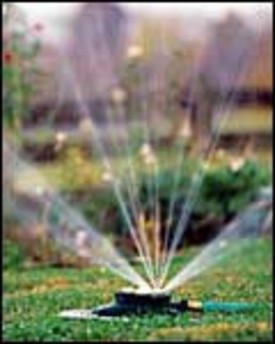|
Both the frequency and method of irrigation and amount of water required vary with your climate, soil, and plants’ needs.
Determine current soil moisture
Dig a 12-inch deep wedge of soil from your lawn or garden. Observe the amount of moisture in the sample. Water only if the top 6 inches of soil is dry.
Choose time of day
Evening and early morning are the best times to water because less water is lost to evaporation than with midday irrigation. On disease-prone plants such as roses, water in the morning to encourage the plants’ leaves to dry quickly. Also avoid overhead sprinkling.
Choose watering method
Aboveground sprinklers cover large areas, such as lawns, most effectively but may encourage the spread of disease on roses, raspberries, beans, and other susceptible plants. In arid climates, around shrubs and trees, and in gardens, use drip irrigation for maximum water efficiency and disease control. Cover irrigation lines with mulch or bury them just under the soil surface.
Adjust sprinkler and drip systems
Set up overhead sprinklers so that water falls only on your lawn or garden and not on sidewalks, roads, or buildings. Adjust the water pressure of either type of system to allow water to penetrate the soil without puddling or running off.
Measure water depth
After 30 to 60 minutes, recheck the depth of water penetration in the soil at different places in the irrigation pattern. Move or adjust the sprinklers to achieve uniform coverage. Stop watering when soil is moist at a depth of 6 to 12 inches. To avoid digging test wedges in the future, note the length of time needed to achieve thorough watering.
Credit: National Gardening Association





























